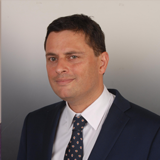MDGs & Bangladesh: Key Achievements & Lessons Learned
Keynote presenter:
Nik Sekhran, Director, Sustainable Development, United Nations Development Programme (UNDP)
Moderator:
Lauren Bradford, Director, Global Partnerships, Foundation Center
Panelists:
Shamsul Alam, Senior Secretary & Member, General Economics Division (GED), Planning Commission, Ministry of Planning, Government of Bangladesh
Subinay Nandy, Former Director, Asia and the Pacific Division, United Nations
Jackson Ewing, Director of Asian Sustainability, Asia Society Policy Institute (ASPI), New York
John Meyers, Managing Director, SwissContact - North America
Mr. Nik Sekhran provided the Keynote Presentation for the session where he highlighted UNDP’s view of social investments which are critical for growth. He said that between 2002 and 2010, Bangladesh was lifted out of extreme poverty and reducing child mortality in the process. Human development investments were made and foundations were built for future growth. In addition, it is important to make the challenges of poor and marginalized communities visible and actionable. One big challenge is that we are moving beyond averages. As we pursue exterminating extreme poverty, we need data as a mechanism for accountability. Data has to be made widely available. For many countries, Bangladesh included, this is a very complex task. He highlighted that these countries need to invest in these statistical apparatuses. This leads to identifying who is left behind and what we need to do. We also should not leave the planet behind. GDPs do not include environment in calculations. We need to find a simultaneous equation; what is the future of growth, how do we catalyze it, how do we make it equitable, and how do we decouple from environmental degradation. He praised Bangladesh in its improvement in human development statistics and healthier and better educated labor market. However, Bangladesh is facing a downturn in investment and extreme poverty still persists.
One big difference between the MDG era and the SDG era is that we are moving beyond averages. In the MDG era we applauded when we cut extreme poverty by half, but now we are going to exterminate it completely, which means we will have to go to the last mile.

Nik Sekhran
Director, Sustainable Development, UNDP
The Keynote was followed by panel discussion where Mr. Shamsul Alam mentioned that Bangladesh achieved almost 18 MDG targets. Inclusive growth strategies, economic structural transformation, manufacturing, policy improvements, sound macroeconomic management, open trade, making public sector accountable, low cost innovations – these were driving forces that helped achieve the MDG targets. He is hopeful that Bangladesh will be one of the achievers of SDGs. This will be accentuated by robust growth in GDP, structural change of economy, consistent policy and committed leadership, open trade and market economy, making the public sector accountable and low-cost innovation for combating deadly diseases.
Mr. Jackson Ewing mentioned that millions of refugees are coming into Bangladesh and that there is economic deprivation and environmental problems. He discussed that in Bangladesh we see sea-level rise and there is deprivation due to this. Changes in precipitation make agriculture less predictable. He raised concerns whether the SDGs are enough to combat environmental degradation.
Mr. John Meyers brought forward the financing aspect outlining in his opening remarks that the SDGs cannot be achieved without financing, financial partnerships and inclusion. For multinationals, we see the growing concerns for people, planet, and profit. There is a holistic approach in their discussions. We need to turn producers into consumers as well. We also need to focus on skills development (as done by ADB, Chevron) and implement it on the ground. He also highlighted that Bangladesh is known as birth place of microfinance. However, microfinance is not the only answer to solving poverty.
Remittances account for $450bn of transfers annually from North to South or West to East, and there are ways to tie them into the financial inclusion dialogue as well to finance the SDGs.

John Meyers
Managing Director, SwissContact - North America
In the intra panel session, when asked about the social and environment factors, it was discussed that it is necessary to unlock investment sitting on the sidelines. Private foundations should be referred to as the highest risk. We need to de-risk and create stable environments and grow SMEs. Once we unlock this, and leverage, we can drive the economic growth. Also, it was discussed that de-risking requires multiple factors. It was discussed that to add to de-risking is not just a credit guarantee and finance – but also capacity building and policy change. Sometimes, it is also about making developed countries as strategic partners. By putting partners on the table, we can bring down the risk, improve partnership and cooperation, and create incentives up. It was conversed that SDGs will potentially struggle in the ability to bring together the geopolitical conversions. The SDGs are not designed to do everything, and this is not a criticism of it. But, it is important that we continue to see bilateral and multilateral conversations on how the system has to be managed.